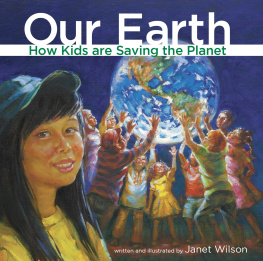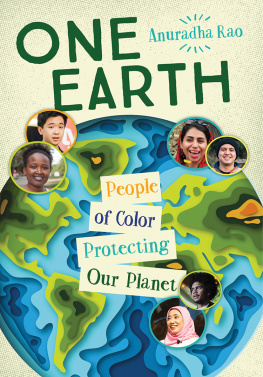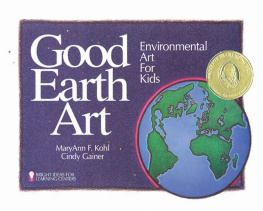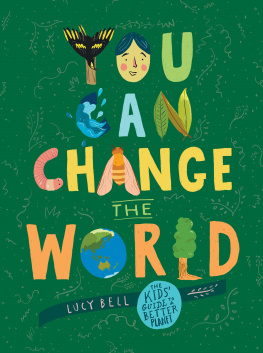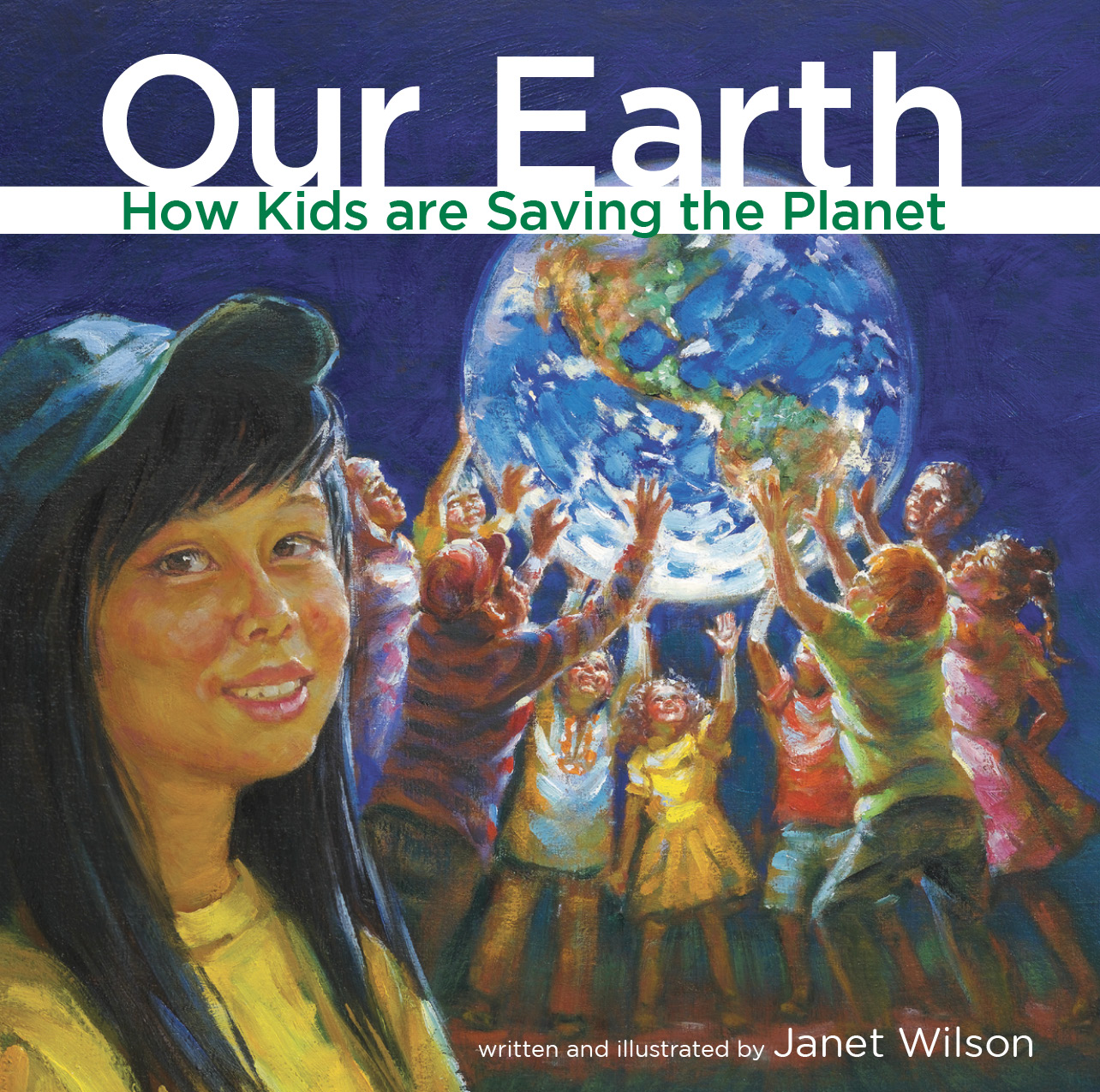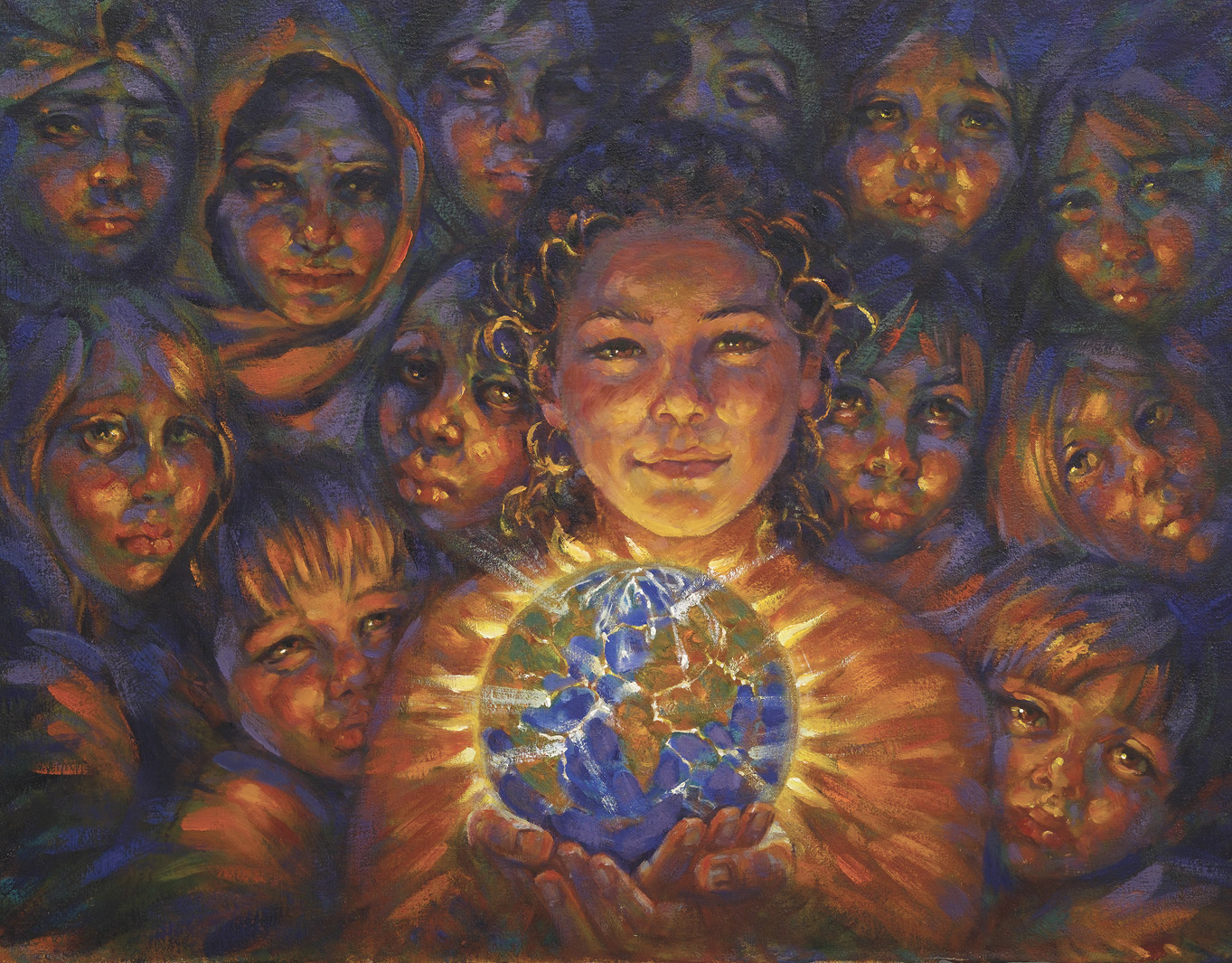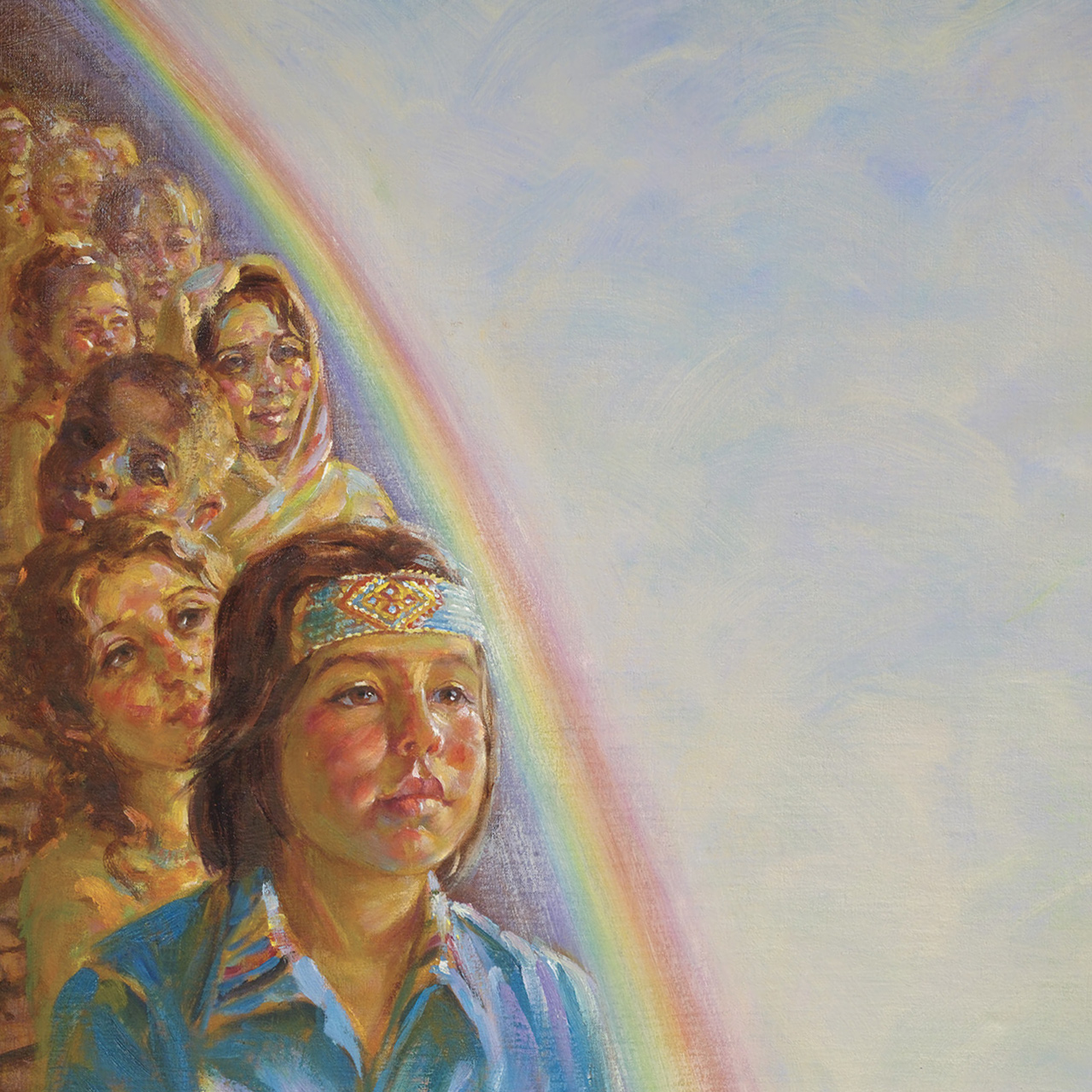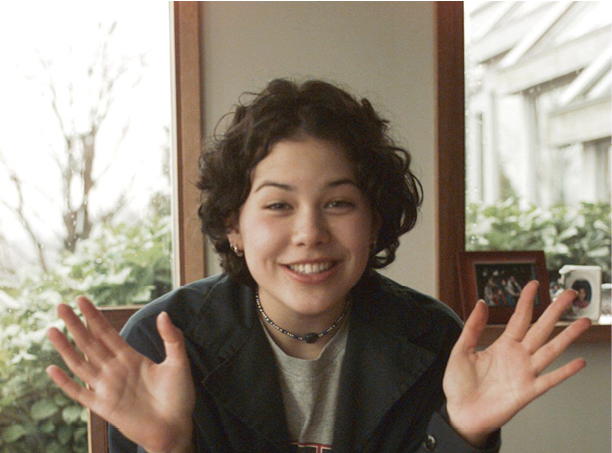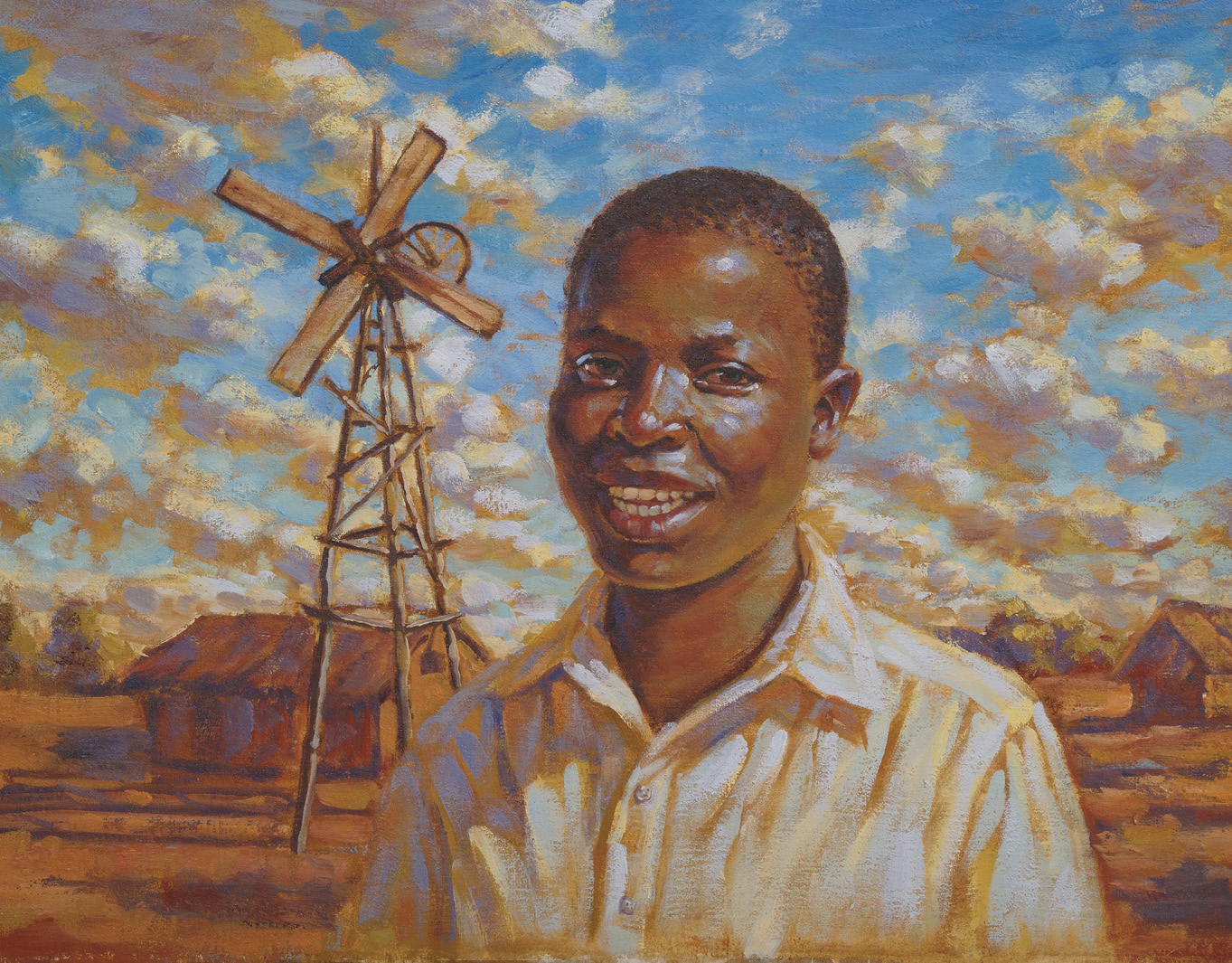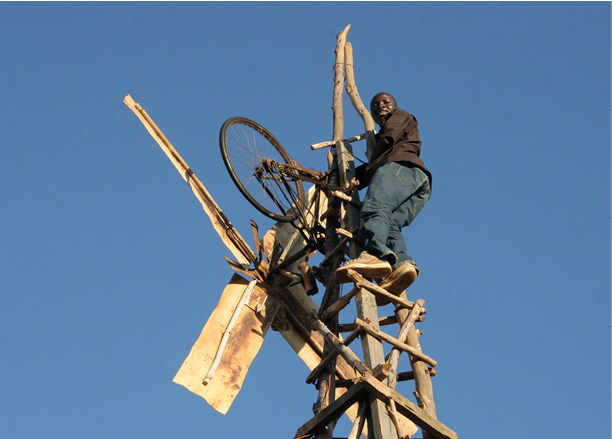Our Earth
How Kids are Saving the Planet
written and illustrated by Janet Wilson
Second Story Press
Dedicated to my grandson, Leon,my reminder of why we need to care for our Earth,and to young environmental activists.You are the generation we have been waiting for.
If many little people,in many little places,do many little things,they can changethe face of the earth. (African Proverb)
The Rainbow Warriors There will be a time when the animals andthe giant trees will begin to disappear.People will fight with each other and not love each other.The beautiful rainbow in the sky will fade away.Then children will come,children who will love the animals, and who will bringback the animals.They will love trees,and they will bring back the giant trees.These children will love other peopleand they will help people tolive in peace with each other.These children will love the rainbow,and they will bring back the beautifulrainbow in the sky.They will be calledthe Rainbow Warriors.Do you love animals?Do you love trees?Do you love people?Do you love the rainbow?Well, if you do, maybe youare a Rainbow Warrior.
Every living thing shares one home our Earth. Creatures that dive, creep, slither, or soar all breathe the same air. Branches, petals, and sprouts reach toward the same sun. Whether we dance on two legs, or gallop on four, all of Earths children need water to live.Today, Earth is showing signs of strain from the rapid increase in the number of us who live on it and from how we use our planets precious gifts. Many Aboriginal cultures around the world tell ancient stories, such as the Rainbow Warriors, that predict these alarming changes to Earth. They warn that we need to change our ways. Since the time that he was chosen as Keeper of the Sacred Peace Pipe when he was twelve, Chief Arvol Looking Horse of the Lakota Sioux Nation has been spreading this message around the world: Our vision is for peoples of all continents to come together as one; to heal and restore peace, harmony, and balance to Earth, our Mother.Why do these stories tell of children coming from each corner of the globe to save Earth? I believe its because young people have many important qualities that are essential to care for Earth. They adapt more easily to change and are flexible in mind and heart. Youth have time, energy, and enthusiasm. Young people also have strength in numbers nearly half of Earths population is young. This generation is more educated and interconnected globally than any other has ever been. This is a generation that is capable of developing informed opinions and understanding of the issues concerning their future.Perhaps the most important power young people share is their love of nature. Although todays youth spend more time indoors than the young people of previous generations, there is a growing movement to get out and reconnect with our precious Earth. Young people with visions of a smarter and healthier world are finding ways to be part of the solution. They are our Rainbow Warriors. Janet Wilson
Severn Cullis-Suzuki, 12, Canada
Im only a child and I dont have all the solutions but neither do you!
Severn is called the girl who silenced the world for five minutes.
When she was nine, Severn spent the summer in aremote Kayapo Indian village in the Amazon rainforest.Kayapo friends showed her where turtles hid their eggsin the sand and how to catch electric eels. They tooklong walks together, ate just-picked papaya for lunch,and splashed in the river where little piranhas swam.From the plane window on her way home, Severn wasdevastated to see large fires destroying the rainforest.Her outrage motivated her to raise money withsome friends so that they could attend an importantenvironmental conference in Rio de Janeiro, Brazil.There she was able to deliver a speech to world leaders.She spoke passionately, telling them, You dontknow how to fix the holes in our ozone layer. You dontknow how to bring salmon back up a dead stream. Youdont know how to bring back an animal now extinct,and you cant bring back forests that once grew wherethere is now desert. If you dont know how to fix it,please stop breaking it! Some people in the audiencecried; others stood and applauded. Many thought itwas the best speech at the conference.
Severn says:
Young people have a special power pester power. Your parents love you,so tell them your fears and concerns.Recruit them to be eco-warriors.

I speak for all generations to comeon behalf of starving children aroundthe world and for the countlessanimals dying. I am afraid to go outin the sun because of the holes in theozone, or to breathe the air becauseI dont know what chemicals are init, and for animals and plants goingextinct every day. Did you have toworry about these things when youwere my age? Im only a child yet Iknow if all the money spent on warwas spent on ending poverty andfinding environmental answers, whata wonderful place this Earth wouldbe! You teach us to behave in theworld, not to fight with others, towork things out, to respect others,to clean up our mess, not to hurtother creatures, to share, and notbe greedy. Then why do you go outand do the things you tell us not todo? You grownups say you love us.I challenge you; please make youractions reflect your words.Earth Summit, Brazil, 1992.
William Kamkwamba, 14, Malawi
My dream is to be an engineer so I can make the world a better place starting with my village.
William, atop his windmill in Masitala village, Malawi
When his familys small farm didnt earn enough money to pay his tuition fees, William had to leave school. Luckily, he was still allowed to use the library. William borrowed a book called Using Energy and read that a windmill generated electricity, something his village really needed. An electric water pump would irrigate the crops so villagers would not starve. Lights would be better than the smoky paraffin candles that made his sisters cough. William longed to hear music and news on a radio. He decided a windmill was the answer.William collected everything he could find a broken bicycle, a fan and headlights from an old tractor, pipes, wires, rusty nails, a shock absorber, scrap timber, even rubber flip-flops. He studied the photo of a windmill on the cover of the book and started to work.The villagers came to watch. He must be going crazy! they said. Six months later, they gathered around the 16-foot (5-meter) tall windmill as William flicked a switch. For the first time, electric light shone in the village of Masitala.

